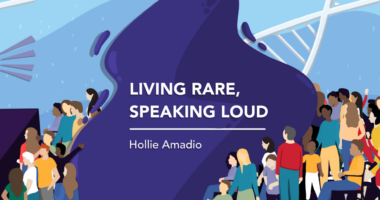The Dangerous Practice of Living in Anticipation

The cast was revving up for the midsong dance break, with 16 counts left. Because the performers occupied the stage and the floor, I took weeks to choreograph the musical number to account for my high school students’ safety. Nevertheless, I smiled as the audience, a captivated crowd of dinner theater guests, applauded and whistled during the performance.
It began as fluttered movement out of the corner of my eye. Before registering my reaction, I darted between patrons’ tables toward the performance space. Then, in one swift move, I scooped up the adorable 2-year-old who had wandered away from her parents and dangerously close to the stage. When I reached the back of the room with the child, their mom met me there apologetically. “I don’t know how you moved faster than me from back here,” she whispered before returning to her seat.
The explanation of my superhero reflex was simple. As the director of a live theater, I remain in an anticipatory mode during the show. Usually, during any performance, I stand behind where the audience is seated, ready and waiting for anything to go wrong. Live shows are unpredictable, and I’m ready for anything under those circumstances.
However, there’s a downside to being in a constant state of anticipation. The next day, I’m always physically and mentally exhausted. And after a multishow run, it can take me several days to recover from what I’ve put my body through. But I was used to it. And until 2018, since I only produced about three shows a year, I didn’t have to worry about “anticipated nights.”
But when our oldest daughter, whom we fondly refer to as Ladybug, showed an aggressive uptick in unexplained symptoms, I constantly lived in a state of anticipation. I was always ready for the school to call, to leave church early, or to get up in the middle of the night to go to the hospital. While others around me seemed to take these medical interruptions in stride, my brain and body remained as taut as a rubber band.
By 2021, Ladybug’s hereditary angioedema diagnosis didn’t bring much relief. Although I had an explanation for the facial swells, stomachaches, and tingling hands, without the approval to administer the medication at home, I relied on my power of anticipation to keep me ever vigilant for the moment I needed to step in and be a supermom and caregiver. Even after the approval of at-home Berinert treatments and, eventually, Haegarda, I remained ready.
In the wee hours of one quiet morning, after we’d had a break between hospital visits and flares, Ladybug knocked on our bedroom door.
“Mommy?” she said in a sleepy voice.
I immediately grabbed my car keys off my nightstand and began getting dressed in the dark. “Yes, sweetie?” I replied as I scuffled. “Give me a second.”
“Can I have some water?” she asked.
I paused. I was halfway dressed, ready to go to the hospital, and all Ladybug wanted was a glass of water. So I complied, ensured that she felt OK, and then returned to bed.
“You can’t keep doing that,” my husband’s voice said in the darkness of our bedroom.
“I have to be ready,” I retorted. “I never know what’s going to happen with her.”
“But that’s not healthy,” he said gently.
“And what happens if she has to go to the hospital in the middle of the night?” I asked. “Or during the day? What happens if we run out of medicine?”
“Then we’ll deal with it when it happens,” my husband replied.
He was right. Although I was always ready at a moment’s notice, I was losing sleep, always tense, and rarely allowed my mind or body a moment to relax. As a result, regardless of what I tried to portray, I was utterly exhausted all the time. Living in a constant state of anticipation may work for the opening night of a show, but it’s a terrible practice to apply to real life.
Caring for a person with a chronic illness comes with its fair share of emergencies and quick decision-making, but it’s OK if we’re not always ready for those moments. Sometimes, we have to cross those bridges when we get to them.
Note: Angioedema News is strictly a news and information website about the disease. It does not provide medical advice, diagnosis, or treatment. This content is not intended to be a substitute for professional medical advice, diagnosis, or treatment. Always seek the advice of your physician or other qualified health provider with any questions you may have regarding a medical condition. Never disregard professional medical advice or delay in seeking it because of something you have read on this website. The opinions expressed in this column are not those of Angioedema News or its parent company, Bionews, and are intended to spark discussion about issues pertaining to angioedema.








Leave a comment
Fill in the required fields to post. Your email address will not be published.